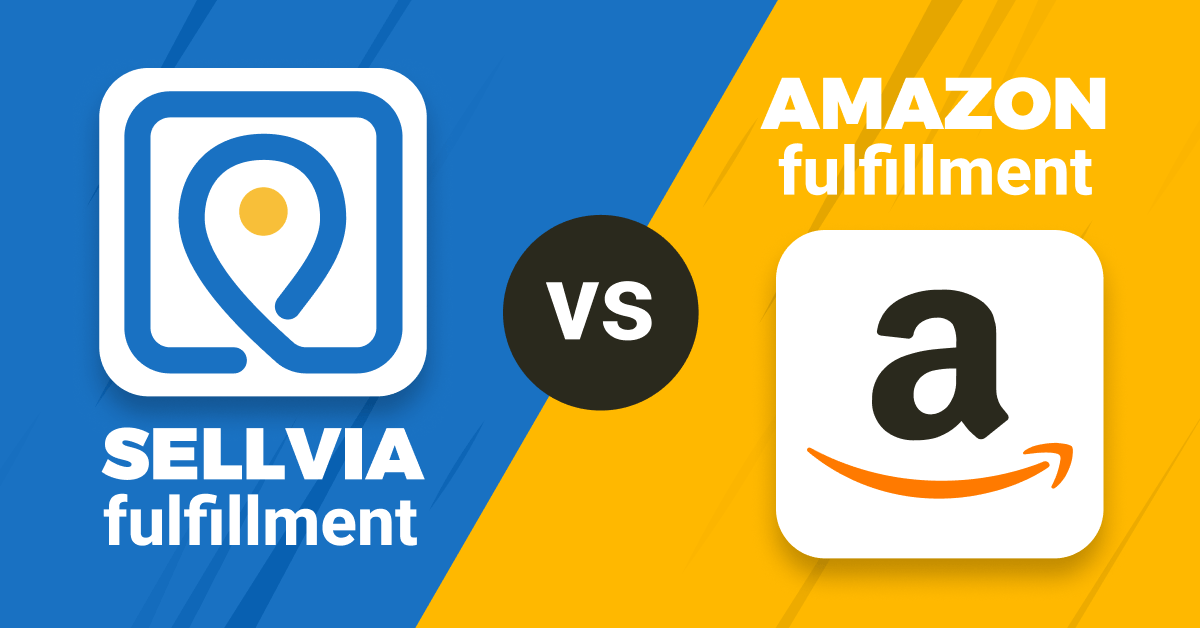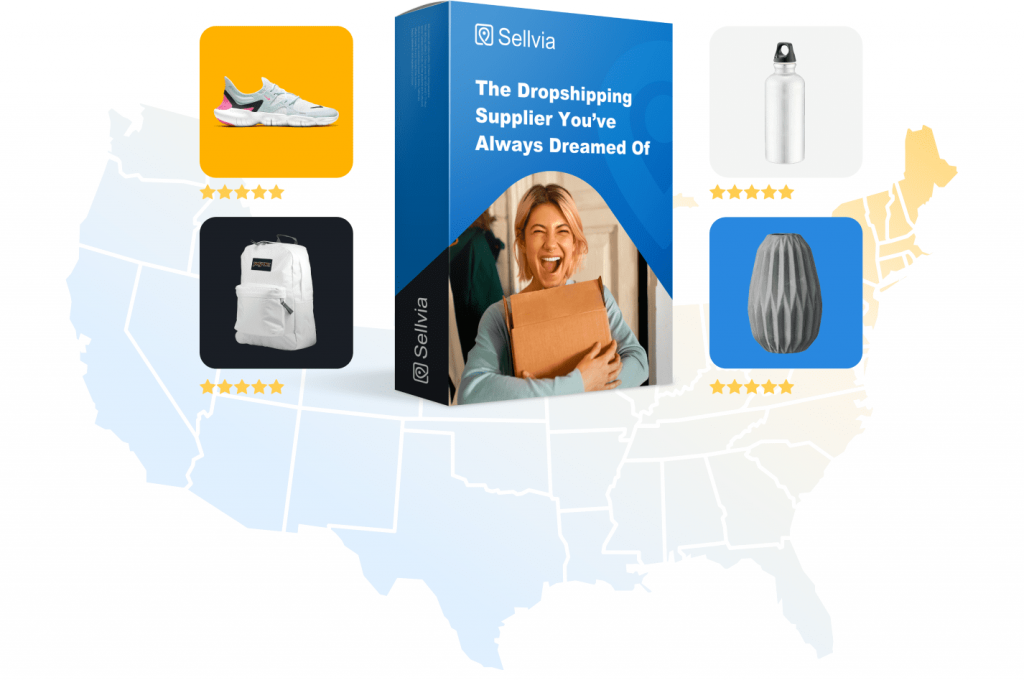Best Facts To Deciding On Sellvia Amazon Seller Dropshipping Services
Wiki Article
How Do You Evaluate The Source Of Products And Suppliers Integration With An Amazon Seller And Shopify Service For Dropshipping Into Us Markets
It's important to compare the strengths of the three platforms when it comes to dropshipping services for U.S. consumers. This includes the reliability of suppliers and integration ease. This article provides a detailed overview of what you should evaluate when looking at Amazon Seller, Shopify and WordPress to fulfill your dropshipping requirements:
1. Amazon Seller
Fulfilled by Amazon FBA (vs. Merchant Fulfilled. Amazon's FBA can offer warehousing speedier shipping and helps to meet the needs of customers. However, FBA requires purchasing inventory upfront, so it doesn't coincide with the traditional dropshipping system.
Amazon's Dropshipping Policies: Amazon requires that you declare yourself to be the seller on your record. Third-party suppliers must be reliable with regards to quality and shipping in order to keep accounts from being suspended due to order issues or bad feedback. Be sure to ensure that the suppliers you select meet Amazon's strict packaging and shipping requirements.
Amazon provides more flexibility when it comes to suppliers. There are fewer integrations that allow dropshipping from external suppliers, such as those found on Shopify or WordPress. If you're a dropshipper via Amazon it is essential to research and work with Amazon-compatible providers that meet strict delivery requirements or select private label FBA options to expedite delivery.
Amazon Sellers: Assessment Steps
Evaluate Supplier reliability: Check if the provider can deliver according to Amazon's expectations of quick delivery (often within 2 to 3 days for Prime customers).
Policy Compliance: Check that the suppliers are in compliance with Amazon's packaging and labeling standards and can manage returns and refunds in accordance with Amazon's guidelines.
Supplier Communication: Dependable and clear communication is critical because you'll need to respond quickly to any issues that arise. Choose suppliers who have regular stock levels and high quality to avoid disruptions if you're using FBA.
2. Shopify
Shopify provides a variety of integration apps with dropshipping firms, including Oberlo. Spocket. DSers. Modalyst. Many of these apps provide options to work with U.S.-based suppliers to reduce delivery times.
U.S. Supplier access: Tools such as Printful or Spocket are made to purchase items from U.S. manufacturers or ones who have U.S. manufacturing facilities. This speeds up shipping dramatically for U.S. customers.
Automated Inventory Syncing Shopify integrates inventory data including product listings, pricing and other information from suppliers in order to decrease the risk of errors in pricing or selling out-ofstock goods. Automated order fulfillment tools reduce manual labor and ensure that your orders are always current.
Variety of Products and Niche Options Check if the integrations provide access to a range of products that match your specific niche. This can impact customer satisfaction and brand consistency.
Shopify: Steps to Assess
U.S.based Supplier Availability Review, which companies have U.S. Warehouses or offer rapid shipping options to the U.S. Market. Printful and Spocket are the best for U.S.-based suppliers.
Review and Product Reviews Quality: If you have the opportunity review reviews, and try products. The reliability of suppliers can differ widely, and customer feedback on product quality is vital to ensure that buyers have a positive experience.
Response Time of Suppliers and Customer Support: Test the speed at which suppliers respond to inquiries particularly if there are issues. Customers will be more satisfied if they have reliable customer support.
3. WordPress (WooCommerce).
Flexible Sourcing with Plugins WooCommerce is a plugin for WordPress, allows for significant flexibility in the sourcing of products, through plugins such as AliDropship Spocket and WooDropship which can sync your suppliers' product directly to your shop.
U.S. supplier options: WooCommerce offers the same integrations as Shopify and U.S. providers through Spocket Printful etc. It makes it easier to deliver items quickly to the U.S.
Product Customization and Private Label Options: WooCommerce may also integrate with private label and custom print providers like Printful, which allows for product branding and customization--helpful for establishing a unique brand identity.
Manual Fulfillment Options: While WooCommerce can be automated to fulfill orders using many plugins you will be in control of the process, making it simpler to modify and troubleshoot if necessary. This is a compromise, because it takes more setup and management when compared to Shopify's simpler plug-and play integration.
Evaluation Steps for WooCommerce:
Compatibility and Reviews: Review supplier plugins to ensure they're well-reviewed and compatible with WooCommerce. Check that products, stock and prices are synced automatically. This is essential to ensure that large orders are properly managed.
Quality Control for Suppliers: Examine the reliability and reputation of suppliers you are considering, particularly U.S.-based ones. Find suppliers that provide excellent customer service, and are constant in their product quality and availability.
The versatility of pricing and product customization can be an enormous benefit when you have to make frequent adjustments in markups based on market trends or supplier costs. Check out the expert Sellvia for more advice including ecommerce solution, online store platform, trending product, good items to sell online, ecommerce dropshipping, ecommerce store, dropshipping website, e commerce e commerce, best items to sell online, best to sell online and more.

How Do You Assess The Security Of Payment Processing And Security
If you are considering dropshipping your products for delivery to the U.S., it is important to review security, payment processing and compliance for Amazon Seller, Shopify (WooCommerce) and WordPress. Each platform has its own options regarding fees and compliance or security. It's important to ensure safe and efficient transactions, as it increases confidence in the customer and reduces risk. Below is a guideline of the steps to take when evaluating each platform.
1. Amazon Seller
Payment Processing
Amazon Pay: Amazon processes all transactions in its marketplace. It offers a seamless and consistent experience to customers. Customers can pay with their saved payment methods within their Amazon account, which improves efficiency and improves conversion rates.
Amazon deducts fees and pays sellers every 14 days. Fees are deducted (such FBA and referral fees). before disbursing payments. Knowing the fee structure is vital, as Amazon's referral fees vary depending on the product category.
Security and Compliance
PCI DSS Compliant: Amazon adheres to Payment Card Industry Data Security Standards. This ensures the information about credit cards is stored and processed securely. Amazon manages PCI Compliance, therefore sellers are not obliged to do this.
Fraud prevention Amazon employs AI-based fraud detectors and prevention tools to monitor transactions, which reduces the risk of fraudulent purchases. Amazon also offers the A-to Z Guarantee, which protects the customers as well as sellers from risky transactions by providing dispute mediation.
Account Security: Amazon enforces multi-factor authentication (MFA) for seller accounts, adding a layer of protection against unauthorised access.
Amazon Sellers: Assessment Steps
Examine Amazon's Payment Disbursement terms to ensure your cash flow is consistent to the requirements of your business. Referral fees can accumulate quickly, so make sure to check your category's referral fees.
Amazon's Fraud Prevention Program: Amazon A-to-Z Guarantee tools for fraud detection and the A-to Z guarantee provide indirect benefits to both customers and sellers. Check that Amazon's safety policies align with your own level of risk.
Account Security: Enable multi-factor authentication for your Amazon Sellers account and keep an eye on the account for unauthorized access.
2. Shopify
Payment Processing
Shopify Payments: Shopify offers its in-house payment gateway, Shopify Payments, which supports major credit cards as well as digital wallets like Apple Pay and Google Pay. Shopify Payments removes charges for transactions and credit card fees, making it an attractive alternative for people living in your region.
Third-Party Gateways: Shopify incorporates over 100 third-party payment gateways such as copyright Stripe Authorize.Net. Each gateway has their own fee structure. Therefore, it is essential to compare rates when targeting the U.S.
Shopify has a transaction cost (0.5-2 percent, based on your plan) when you are using a third-party gateway. This is in addition to the gateway fees. Shopify has a fee that is combined along with your payment processor in the event that you intend to target the American market.
Security and Compliance
PCI DSS conformity: Shopify has achieved PCI DSS level 1 certification which means that it is in compliance with the industry standard for safe credit card transactions. This certification applies to all merchants that use Shopify Payments and third-party payment gateways. Shopify sellers can stay out of PCI Compliance Management.
Fraud Analysis Tool: Shopify Payments provides basic fraud analysis (for example, flagging purchases at high risk) and additional tools can be found in applications like FraudLabs and Signifyd. These tools use indicators like IP addresses and mismatched shipping/billing addresses to reduce fraud.
SSL Encryption Shopify offers SSL certificates on all plans. SSL certificates protect transactions between customers and servers by encrypting information.
Evaluation Steps for Shopify:
Compare Payment Gateways: Compare Shopify Payments fees and the fees that third party gateways charge. Shopify Payments' rates may be less expensive for transactions within the US, however it is important to ensure that there are no hidden charges.
Assess Fraud Protection Capabilities Check the fraud analysis offered by Shopify and decide if any additional tools or apps are required for orders with high risk. Check that your fraud plan is compatible with your dropshipping strategies and customer profiles.
Security and Compliance: Check Shopify's PCI and SSL compliance. This will give credibility to the site and protect your customers. It can also improve conversions and build trust.
3. WordPress (WooCommerce).
Payment Processing
WooCommerce provides a number of flexible gateway options. It includes copyright, Stripe Square, and Authorize.Net. WooCommerce also allows WooCommerce Payments (powered by Stripe), which offers an effortless experience on the platform.
Customization and fees: Each gateway has its own fee structure and WooCommerce does not add any additional transaction charges beyond the gateway's. This lets you pick the most efficient gateway to process U.S. transactions.
Currency and Tax Handling: Numerous of the gateways available on WooCommerce offer the option of handling different currencies as well as automatic tax calculations, which will make it easier for international dropshipping.
Security and Compliance
PCI Compliance Responsibility: Unlike Amazon and Shopify, WooCommerce is self-hosted which means it's the responsibility of the store owner to make sure that the store is PCI compliance. Utilizing a PCI-compliant payment processor (like Stripe or copyright) helps with this obligation, but additional security measures (SSL or secure hosting) are required.
WooCommerce, like Shopify, offers fraud-prevention plugins, including WooCommerce Anti Fraud, WooCommerce Signifyd and FraudLabs. These tools evaluate high-risk indicators and then automatically block or flag suspicious transactions.
SSL and Security plug-ins WooCommerce depends on WordPress to ensure security. It is therefore essential to secure the website. Wordfence, Sucuri and an SSL certificate are all required.
WooCommerce Assessment Steps:
Choose the right payment gateway Select a PCI-compliant payment gateway (like Stripe or copyright) and look over the fees associated with transactions for U.S.-based transactions. Look for payment gateways which allow for the management of currency and taxes in dropshipping. This will make management easier.
Implement Security Measures. Check that your WooCommerce website is located on a server that includes SSL encryption. Install PCI-compliant gateways, and install security plugins such Wordfence to protect your website and customer data.
Review the options for preventing fraud. WooCommerce needs manual configuration for fraud prevention. Also, evaluate the plugins to best meet your security requirements. You might want to consider using tools that track IP address, billing errors and other location information. View the most popular Sellvia reviews for site advice including electronic commerce, online commerce store, sellvia review, ecommerce dropshipping, ecommerce retailer, best online storefront, starting an ecommerce business from scratch, online store platform, software e commerce, best online commerce platform and more.
